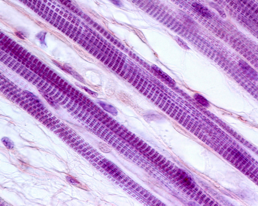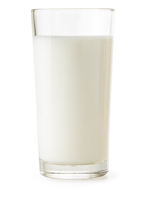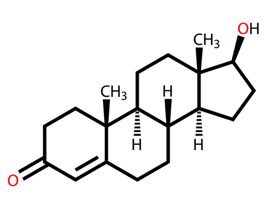Nutrient Deficiencies and How to Rectify Them
Vitamins and minerals are essential nutrients that help you maintain optimal health by regulating your metabolism, hormones, and aiding in ...

Vitamins and minerals are essential nutrients that help you maintain optimal health by regulating your metabolism, hormones, and aiding in ...
Carbohydrates always seem to be a hot topic when it comes to losing fat or building muscle – or both. ...
Looking for lazer focus and unabated energy during tough workouts? Tyrosine could be the superamino you need to swoop in ...
There is no need to go into detail about how important shoulder development (specifically deltoids) is to a complete physique. ...
Did you know that your body is approximately 90% bacteria and only 10% human? From birth to death, our gut ...
In this day and age, exercise and general health have become not only a trend but a necessity. Townships and ...
It’s been said that women are from Venus & men are from Mars, but when it comes to potential in ...
There are essential fatty acids, and there are essential amino acids, but there are no essential carbohydrates – our body ...
Cholesterol. I think we can all agree that it may very well be one of the most feared nutrients in ...
In the pursuit to naturally increase T-levels, many have turned to testosterone boosters. Today we address their validity, while laying ...
In today’s society, emphasis is placed on work and productivity over anything else. This could mean sacrificing quality of nutrition ...
Just because that insane workout technique sounds excruciatingly awesome, that doesn't mean you should add it into your routine. You ...
Satellite Cell Activation: A Necessary Muscle Growth Component…
How You Can Stimulate Yours for Maximum Muscle Gains!
 The regenerative, healing capacity of muscle fibers is essential for the lifelong maintenance and growth of muscle tissue. To counter the accumulative wear and tear of daily living or in the aftermath of intensive resistance-training workouts we must ensure that our muscles are in a constant state of turnover, whereby fresh muscle fibers are continually generated. For this to occur, the body must draw from a ready supply of a unique population of tissue-specific muscle stem cells called satellite cells.
The regenerative, healing capacity of muscle fibers is essential for the lifelong maintenance and growth of muscle tissue. To counter the accumulative wear and tear of daily living or in the aftermath of intensive resistance-training workouts we must ensure that our muscles are in a constant state of turnover, whereby fresh muscle fibers are continually generated. For this to occur, the body must draw from a ready supply of a unique population of tissue-specific muscle stem cells called satellite cells.
Residing on the outside of mature muscle fibers between the basal lamina (outer surface of a cell’s membrane) and plasma membrane (sarcolemma, or the cell membrane of a striated muscle cell fiber), maintaining a close interaction and thus a greater sensitivity to muscle injury, satellite cells are activated whenever muscle repair is needed. Normally quiescent, these cells, when activated, spring into action by proliferating to the site of muscle injury before differentiating into mature myoblasts, which, in turn, immediately exit the cell cycle to fuse with damaged fibers, and with each other, to build and repair damaged muscle tissue.
Sometimes equated with stem cells as a population but divergently different in their specificity of action, specialized satellite cells, also referred to as progenitor cells, are known to divide only a limited number of times (whereas stem cells may replicate indefinitely). The role of progenitor cells is to differentiate into specific types of cells; they are further along in the cell differentiation process than are stem cells, which, in adult stem cell form, are, by contrast, on standby in all tissues as a permanent repair system for the many specialized cells of the body.
Possessing a single nucleus (a cell’s control center which regulates gene expression) and replicating through division, satellite cells, when prompted by tissue damage, differentiate (become mature muscle cells) and fuse to existing fibers to become new muscle protein strands or assist in the muscle repair process, as mentioned.
Once satellite cells are activated, their descendant cells, called myogenic precursor cells or skeletal myoblasts, undergo multiple rounds of division before the aforementioned differentiation and multiple-fusion can occur (also known as myogenesis, or more commonly, muscle hypertrophy). The eventual result of this highly efficient and complex process is a fresh complement of myofibers: long, cylindrical, multinucleated cells comprised of a series of repeated units called actin and myosin filaments (principle cytoplasmic proteins responsible for muscle contraction) which in their complete composition comprise a sarcomere, or the functional unit of a muscle fiber.
Once the satellite cells’ regenerative actions have begun to counter the muscle damage for which they were intended to address (a process that typically takes place within a two-week period), a residual pool of quiescent satellite cells is immediately established to support additional regeneration, when needed. The growth of new muscle tissue and the repairing of damaged fibers thus continues unabated.
To become active, satellite cells must enter the cell cycle and recapitulate, or repeat, the various molecular pathways that occur during the initial formation of muscle. As regulators of satellite cell biology and intimately involved in the differentiation of stem cell progeny of all systems of the body, such pathways (including the Wnt and notch signaling pathways, both important for embryonic development) govern the activation and expansion of satellite cells so they may form new muscle tissue. One signaling pathway of particular interest among members of the iron community is myostatin.
A protein encoded by the MSTN gene, and a member of the transforming growth factor beta (TGF-beta) family, which serves as a negative regulator of muscle growth in developing adult skeletal muscle, myostatin is found in abundance in muscle cells where it is designed to curtail protein synthesis and accelerate muscle cell degeneration by stimulating autophagocytosis (a catabolic mechanism whereby unnecessary or dysfunctional cellular components are eliminated).
Decidedly non-anabolic, myostatin is nevertheless needed to restrain muscle development so muscle differentiation may not be allowed to occur uninhibited (yes, too much muscle can be a bad thing; indeed the degradation of cellular components promotes cellular survival by ensuring greater energy resources for a more limited number of cells). Though myostatin may never be completely eliminated (and clearly it would not be in our best interests for this to occur), there are ways to limit its influence. Indeed, to ensure greater satellite cell proliferation, we may also look to minimize myostatin activation on a smaller scale (continue reading for ideas on how to do just that).
Growth factors: how they influence satellite cell activation, and how you can boost your own supply
Although the activation of satellite cells will ultimately lead to the muscle growth and/or maintenance we all experience to a greater or lesser degree regardless of whether we are couch potatoes or elite level athletes, the rate at, and extent to which, these cells’ differentiation influences how much muscle we eventually build is dependent upon a confluence of factors that, to a large extent, we may control.
The degree of muscle trauma which leads to muscle fiber injury, or damage, must be our first consideration when seeking to stimulate maximum satellite cell activation and, ultimately, myogenesis. Through intensive resistance training the damage that occurs to specific muscle cells prompts the disruption of existing muscle cell organelles. Such disruption serves as a warning signal to the adjacently located satellite cells and the regenerative response of muscle cell multiplication and differentiation ensues: in short, muscle hypertrophy, or an increase in a muscle fiber’s cross sectional area, occurs in light of the enlisted satellite cells’ combined efforts to repair or replace damaged muscle tissue. Bottom line: without sufficient training intensity, fewer satellite cells are called into action and fewer muscle gains may result. But our satellite cells must first be fully equipped to fulfill their muscle building mission.
While the fundamental importance of increasingly harder and heavier weight training sessions on satellite cell recruitment cannot be denied, an additionally significant facilitator of the muscle growth process is the complex interplay of various growth-factors (hormones or hormone-like substances) that, rather than exclusively creating the initial conditions for satellite cell activation as noted whenever we force our muscles to adapt to high training demands, stimulate these cells to work to full capacity. Indeed, to promote the laying down of the full complement of muscle fibers in need of satellite cell-mediated regeneration, we must first hormonally prime satellite cell activity so as to regulate the effectiveness of these cells.
In addition to Hepatocyte Growth Factor (HGF) and Fibroblast Growth Factor (FGF), which enable satellite cells to migrate to damaged muscle tissue and prompt revascularization (the formation of blood vessels) during muscle rebuilding respectively, are those most coveted, and widely studied, of growth factors: Insulin-like Growth Factors 1 and 2 (the IGF’s). Known for its important role in catalyzing muscle hypertrophy, inducing protein synthesis, and blocking muscle atrophy, a sufficient blood circulation of IGF-1, which, like IGF-2 (a growth hormone active during gestation), shares a structural similarity to the highly anabolic storage protein insulin, is a major factor in optimal muscle repair.
To ensure a plentiful supply of IGF-1:
 – Consume one half gram of fat for every pound you weigh:
– Consume one half gram of fat for every pound you weigh:
One study reported than when subjects are placed on a low fat diet for just 11 days their IGF-1 levels drop by 20%.
– Supplement with both creatine and whey protein:
As well as pulling more water into muscles to create volume and providing an efficient energy source for muscle fiber recruitment, creatine also has been shown to increase IGF-1 production.
Another bodybuilding supplement staple, whey protein, was shown to promote a two-fold blood circulation of IGF-1 production in those taking 40 grams before and soon after workouts for 10 weeks, in comparison to those taking 40 grams of carbs before and after training over the same period. For best results, take 5 grams of creatine before and after training and 20-30 grams of whey protein 30 minutes before training and soon after working out.
 – Be a carnivore:
– Be a carnivore:
Have animal protein form the basis of your nutrition plan. It has been reported that vegans have IGF-1 levels that are around 15% lower than their carnivorous counterparts. Many other studies have shown that meat eaters enjoy higher circulating IGF-1 levels, and hence a greater degree of muscle mass.
– Drink milk (if you can stomach it):
By consuming 2-3 glasses of milk each day we not only significantly increase our circulating IGF-1 but also raise our IGFB-3 levels (IGFB-3, a binding protein, boosts the muscle growth boosting actions of IGF-1). Providing both whey and casein proteins (both of which individually raise IGF-1), and possessing a high amount of complete proteins overall, milk is a sure bet for maximizing our IGF-1 levels.
Insulin
Insulin itself strongly influences the extent to which satellite cells are used to build bigger muscles. As a fuel substrate to power satellite cell activity, and as a source for intra-muscular energy, the optimal uptake and utilization of glucose is essential. Aside from advancing muscle growth through  muscle protein synthesis and in allowing our blood vessels to relax and dilate so as to promote greater blood and nutrient flow to damage muscle tissue, insulin also boosts muscle glycogen volume and the rate at which it is stored. To meet our muscle building insulin needs and to restock our glycogen levels we may:
muscle protein synthesis and in allowing our blood vessels to relax and dilate so as to promote greater blood and nutrient flow to damage muscle tissue, insulin also boosts muscle glycogen volume and the rate at which it is stored. To meet our muscle building insulin needs and to restock our glycogen levels we may:
– If lean, take 20-40 grams of fast digesting carbs, such as fruits, first thing in the morning (the exact amount will depend on whether we are bulking or dieting).
– Consume 30-80 grams of fast digesting carbs within 30 minutes of resistance training along with 30 grams of whey protein (which, due to its high leucine content, has also been shown to further boost insulin levels, especially when taken in conjunction with rapidly absorbed carbs).
– Supplement with Alpha Lipoic Acid (ALA), an antioxidant that mimics the effect insulin has on muscle cells.
 Testosterone
Testosterone
The granddaddy of all bodybuilding hormones, testosterone, is essential in determining our full muscle growth potential. By stimulating GH responses in the anterior pituitary, increasing the concentration of neurotransmitters at the muscle fiber site, interacting with nuclear receptors in DNA, and influencing satellite cell effectiveness through increased IGF-1 production and androgen receptor density (androgen receptor proteins are expressed prominently in satellite cells), testosterone is believed by many to hold the key to unlocking full satellite cell activation.
You have done your job in the gym. To ensure your satellite cells are doing theirs, to translate your training efforts into muscle gains, you may increase your testosterone levels by:
– Staying as lean as possible in the offseason: lowering our bodyfat to respectable levels (under 12% for males and 20% for females) will promote a more favorable hormone balance. Many studies have shown that the fatter we are, the lower our testosterone levels will be.
– Upping the fat: that’s right, by ensuring an adequate intake of healthy fats like those found in avocados, olive oil, fatty fish, nuts, and, yes, lean animal meats (saturated fat will also ramp up your T levels) you will, aside from maintaining the integrity of all of the cells of your body, provide the building blocks for testosterone production.
– Controlling your carb intake: while the strategic spiking of insulin levels through the timely consumption of high sugar carbs is a necessary anabolic measure to ensure optimal glycogen uptake, we must also be sure to avoid the over-consumption of this important energy macronutrient. It has been shown that an immediate drop in testosterone levels may be experienced following a high carb feeding; 3-4 such feedings per day may lead to lower overall T levels.
– Keep your training sessions under 45-minutes of intensive effort. Any longer than 45 minutes and the catabolic stress hormone cortisol may begin to ravage your testosterone supply.
Growth Hormone
Released from the anterior pituitary gland largely in response to the stimulus of resistance training is Growth Hormone (GH), an integral part of the muscle growth process. Facilitating the uptake and end-stage incorporation of amino acids into new muscle proteins, GH is thought to promote muscle cell fusion irrespective of IFG-1 uptake (which according to the somatomedin hypothesis, is needed, in locally produced form, to mediate the growth producing actions of GH).
Growth hormone plays a critical role in controlling how large our muscle fibers grow and is thought to facilitate the second phase of myogenesis (whereby myoblasts are aligned into existing myotubes, rendering these myotubes mature before the third and final step of myogenesis, cell fusion, can, in earnest, commence).
To boost circulating GH we may:
 – Get at least eight-hours of sleep each night: sound, uninterrupted sleep is known to optimize GH production.
– Get at least eight-hours of sleep each night: sound, uninterrupted sleep is known to optimize GH production.
This is by far the simplest, cheapest and most effective way to raise our GH levels. The strongest wave of GH occurs within the first hour of sleep and is released in episodic waves once every 90 minutes thereafter.
An all-round anabolic elixir, sleep has also been proven to boost testosterone levels, with one study showing that men who averaged just five hours of sleep or less per night experienced a 10-15% decrease in testosterone levels.
– Periodically engage in high intensity burst-type training in which the heart rate exceeds the anaerobic threshold for 30 seconds at a time. Do this five times within the same workout to activate super fast-twitch muscle fibers which, in turn, will be called upon to release GH.
– Supplement with both L-Arginine and L-Lysine immediately before training and sleeping: for best results take 3-5 grams of each per serving. It has been shown that the combination of L-Arginine and L-Lysine can elevate GH by up to 700 percent.
– Take 2-10 grams of Glutamine immediately after workouts and before bed. Important not only for immune system integrity and muscle recovery, glutamine also has been shown to boost GH.
Myostatin: when less is more
The muscle-hypertrophy signaling pathway myostatin can have a profound influence on the extent to which satellite cells become fully fledged and functional muscle fibers.
 While myostatin is needed to curtail excessive muscle growth, too much can put the brakes on impressive muscle gains.
While myostatin is needed to curtail excessive muscle growth, too much can put the brakes on impressive muscle gains.
Simply put: the lower our myostatin expression rate, the more muscle we may gain. It has been theorized that a major genetic component responsible for an elite level bodybuilder’s ability to significantly out-mass his or her peers is their level of myostatin expression; that bodybuilding champions possess a genetic advantage which enables them to build muscle without the limiting influence of the restrictive myostatin.
In fact, it has been shown that individuals with a mutation in the MSTN gene (which provides instructions for making the myostatin protein) will experience myostatin-related muscle hypertrophy; rather than restraining muscle growth, these ‘defective’ MSTN genes will instead signal an overproduction of muscle tissue. Aside from being born with the right parents and/or possessing a mutative MSTN gene, there may be other ways to curtail this most catabolic of regulatory pathways.
Myostatin also appears to contribute to muscle atrophy in that its levels rise in people who are forced to stop using a particular muscle group. In fact, exercise physiologists have discovered exercise to be an excellent myostatin blocker, which may account for some of the gains we experience in the gym. The take home lesson here is to ensure your muscles remain in an ongoing state of protein synthesis through regular intensive training; allow no more than 72 hours between workouts before hitting the same body part again to keep myostatin from impinging on your muscle gains.
Targeted supplementation may also downregulate myostatin expression.
One study, published in the journal Molecular and Cellular Endocrinology, in which individuals who engaged in resistance training while taking creatine on a daily basis were assessed over an eight-week period, concluded that, compared with subjects taking a placebo, the creatine-fuelled lifters experienced a significantly lower secretion of myostatin. A vast body of literature supports the anabolic effects of creatine supplementation. Now we may add myostatin downregulation to this super supplement’s ever growing list of muscle building benefits.
Muscle: our most adaptive tissue
Muscle is the most remarkably adaptive tissue of the human body; its continued maintenance and growth is brought about through a complex molecular process involving the interplay of key hormone interactions, signaling factors, rest and recovery, optimal nutrition and supplementation, and the ultimate activation and subsequent differentiation and fusion of site-specific satellite cells.
Governed by the degree to which muscle is damaged, or by which muscle microtrauma is incurred, growth is experienced when the rate of muscle protein synthesis is greater than the rate of muscle protein degeneration. Thus, the importance of various growth factors and the nutritional composition of our diet on a muscle’s ability to fully heal and – something all hard training bodybuilders are constantly striving for – grow larger and stronger than before.
A key point to remember: though muscle protein synthesis and hypertrophy begins almost immediately after muscle damage occurs (protein synthesis may be stimulated within 2-4 hours following a single weight training session, and may remain elevated for up to 24 hours), actual muscle growth is a relatively slow process, usually taking, once all growth mandates are fulfilled, weeks or months before modest gains are noticeable. The truly committed bodybuilder must therefore be patient and appreciate the finely tuned processes and remarkable series of events that must first occur before their gym efforts and rewarded with a well-deserved layer of new muscle. And for those personal trainers who are with great regularity asked by their clients how muscles are built, you may now, equipped with this article’s insights, provide more than a cursory explanation involving “muscle microtrauma” and an order to “train heavy and eat more protein bro.”
References
Caronia, L, M., et al. Abrupt decrease in serum testosterone levels after an oral glucose load in men: implications for screening for hypogonadism. Clin Endocrinol (Oxf). 2013 Feb;78(2):291-6. doi: 10.1111/j.1365-2265.2012.04486
Hikim, S. et al. Androgen receptor in human skeletal muscle and cultured muscle satellite cells: up-regulation by androgen treatment. J Clin Endocrinol Metab. 2004 Oct;89(10):5245-55
Hittel, D.S., Axelson, M. et.al. Myostatin decreases with aerobic exercise and associates with insulin resistance. Medical Science Sports and Exercise. 2010 Nov; 42(11):2023-2029.
Pietrangelo, A. the effects of Testosterone on the Body.
http://www.healthline.com/health/low-testosterone/effects-on-body– retrieved on 18.7.14
Redmon, J. Creatine: Myostatin’s Enemy. http://www.muscleandbodymag.com/creatine-myostatins-enemy/ – retrieved on 18.7.14
Saladin, K. (2010). Anatomy and Physiology (3rd ed.). New York: Watnick. pp. 405–406.
Saremi, A., Gharakhanloo, R., et.al. Effects of oral creatine and resistance training on serum myostatin and GASP-1. Molecular and Cellular Endocrinology. 2010Apr; 317(1-2):25-30.
Seaberg, R. M.; Van Der Kooy, D. (2003). Stem and progenitor cells: The premature desertion of rigorous definitions”. Trends in Neurosciences 26 (3): 125–131.
Shi, X., et al Muscle stem cells in development, regeneration, and disease http://genesdev.cshlp.org/content/20/13/1692.full – retrieved on 18.7.14
Shadrach, J., et al. Stem cells for skeletal muscle repair http://rstb.royalsocietypublishing.org/content/366/1575/2297.full – retrieved on 18.7.14
Sotiropoulos, A., et al. Growth hormone promotes skeletal muscle cell fusion independent of insulin-like growth factor 1 up-regulation. http://www.pnas.org/content/103/19/7315.full.pdf – retrieved on 18.7.14
Stoppani, J. Insane Growth Factors. Bodybuilding.com. http://www.bodybuilding.com/fun/insane-growth-factors-nutrition-to-supersize-your-physique.html – retrieved on 18.7.14
Stoppani, J. Rule your insulin. Bodybuilding.com. http://www.bodybuilding.com/fun/the-muscle-building-messenger-complete-guide-to-insulin.html – retrieved on 18.7.14
Thomas, N., et al. Myostatin, a Negative Regulator of Muscle Growth, Functions by Inhibiting Myoblast Proliferation December 22, 2000, The Journal of Biological Chemistry, 275, 40235-40243.
Tuch, B., E. (2006). Stem cells—a clinical update. Australian Family Physician 35 (9): 719–21.
The University of Chicago Medicine. Sleep loss lowers testosterone in healthy young men. http://www.uchospitals.edu/news/2011/20110531-sleep.html – retrieved on 18.7.14
Volek, J. et al. Testosterone and cortisol in relationship to dietary nutrients and resistance exercise Journal of Applied Physiology. Published 1 January 1997Vol. 82no. 49-54
Wagner, K., et al. Myostatin-Related Muscle Hypertrophy. http://www.ncbi.nlm.nih.gov/books/NBK1498/ – retrieved on 18.7.14